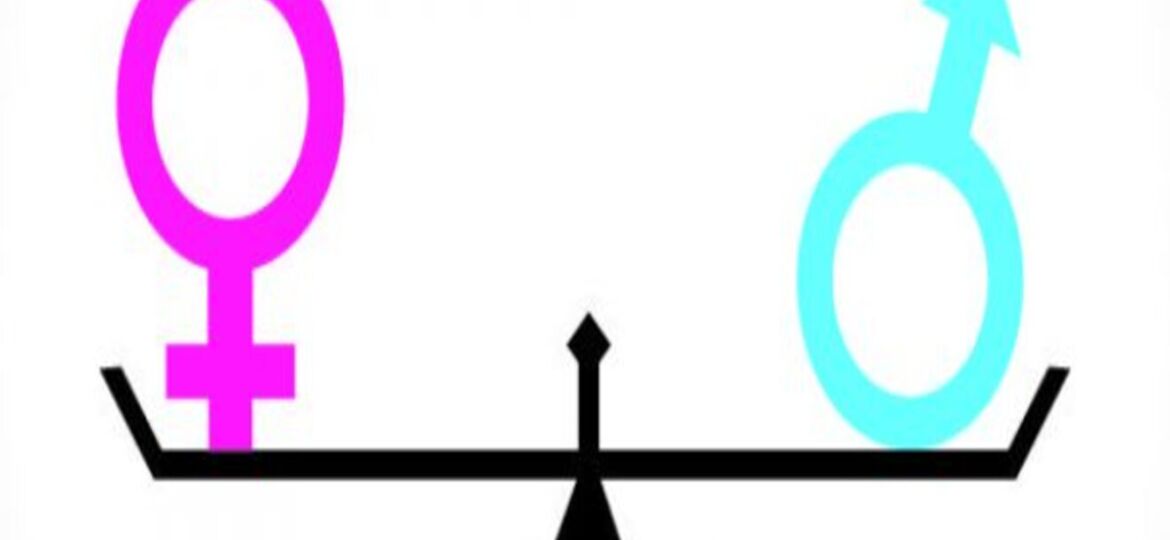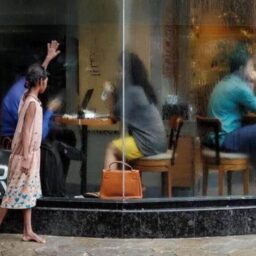
INTRODUCTION
Women have always been subjected to the supremacy of their male partners in marriages. We have seen the scenarios where a wife silently suffers domestic violence. It remains confined within the four walls of their homes. But it is not completely wrong to address that our society, being patriarchal, inflames the occurrence of the same. The people, more precisely, the women are attuned to this condition so perfectly that subconsciously they find it the default way, and thus, these cases more often remain unnoticed and unreported.
But the case of Santosh Mahadev Atkar vs the State of Maharashtra makes a noteworthy judgment, showing that a wife in a marriage is not is an object or chattel, but has as equal status as that of the husband.
SANTOSH MAHADEV ATKAR VS THE STATE OF MAHARASHTRA, BOMBAY HC
FACTS
The accused and appellant, 35- years old, Santosh Mahadev, and Manisha, deceased, were married on 15th December 2015 and were blessed with a girl child, Rohini, who was of 6 years at the time of this incident. They were residents of Servants’ Quarters of Vitthal Hospital at Pandharpur, living there with their daughter and the appellant’s mother. The accused suspected the character of his wife. They used to have quarrels in their homes pretty now and then.
On 19.12.2013, at 6:00 a.m., Manisha, the deceased, was about to leave the house when the accused asked for a cup of tea. But the deceased refused to make tea. This gave a sudden provocation to the accused and he stroked her with a hammer on her head from behind. She was gravely injured and was bleeding. It led to the bloodstain on the floor. The accused bathed her then and he wiped the bloodstains with cloth from there to destroy the evidence. Their 6-year-old daughter, Rohini, had witnessed this incident, who woke up on hearing a quarrel between her parents. This event had traumatized the little girl who saw lying her mother on the ground after getting injured by the hit of a hammer. The appellant’s mother, who worked in Vitthal Hospital at Pandharpur, was not present there during this occurrence.
The accused had wasted enough time before taking his wife to the hospital. He primarily took her to the Vitthal Hospital at Pandharpur at 7.00 a.m. where she was treated by Dr. Dhotre (Medical Officer at Vitthal Hospital, Pandharpur) and the appellant informed that the had hit her with a hammer at 6.30 a.m. at the residential quarters of Vitthal Hospital. After introspecting her serious injury, she was later taken to Civil Hospital at Solapur. She suffered so severely that she was unable to speak and eventually, she succumbed to her injuries on 25th December 2013.
Manisha’s uncle, Macchindra Waghmare, visited the Vitthal Hospital after getting informed about his niece’s condition where the appellant informed that he had assaulted her. He, then, lodged a complaint with the Pandharpur Police Station for which investigations began. A charge-sheet was filed against the accused of the offense punishable under Section 302, for the murder, and 201, for disappearing the evidence, of the Indian Penal Code, in the Court of the learned Magistrate at Pandharpur.
Macchindra Waghmare, Manisha’s uncle, and Nandabai, Manisha’s mother, also stated that Manisha was used to get ill-treated by the accused who suspected her character, would quarrel with her and assault her.
The child witnesses, Rohini, statements were taken on 30th December 2013, i.e, 5 days after the demise of her mother. Her statements were of utmost importance as she was present during the event happened. She was traumatized by this incident. She firmly narrated the complete incident and even identified the hammer, the evidence, with which her mother was hit.
Dr. Dhotre had produced a handwritten note of his which he had noted when the appellant had come to him for Manisha’s treatment on 19th December 2013 at 7.00 a.m and stated to him that he assaulted his wife, Manisha, hit by a hammer at 6.30 am that day.
Dr. Dhotre had suggested a CT scan of her and to take her to any higher center for her treatment because of her serious wound. After which she was taken to the Civil Hospital at Solapur. On 25th December, her demise happened out of a head injury.
Manisha’s post mortem report stated internal injuries in her head. Her post mortem report mentioned hemorrhage present all over the brain and ‘Brain congested & ocetomatovy’. She had died due to a head injury only. These injuries were found to coherent with the ones that were begotten in the incident.
The place where the incident had happened, had a room with an open kitchen and a bathroom. Krishna Kale, a witness, had seen blood-stained cloth that was used to wipe the blood from the floor and that on entering the bathroom, he saw blood-stained blouse, petticoat, chaddar, and gunny bag lying there.
The photographs of the spot taken by another witness, Vilas Salunke, had no bloodstain on the floor even it was taken soon after the incident had happened.
DECISION OF THE COURT
The Additional Sessions Judge, Pandharpur in Sessions Case No. 13/2014, convicted and sentenced the appellant in 2016 as:
- rigorous imprisonment for 10 years together with a fine of Rs. 5,000/-, default of which will result in simple imprisonment for 6 months for the offense under section 304, Part II of the Indian Penal Code for culpable homicide not amounting to murder;
- rigorous imprisonment for 2 years with a fine of Rs. 3,000/-, default of which will result in simple imprisonment for 3 months under section 201 of the Indian Penal Code for the attempt of disappearing the evidence from the crime scene.
The Court ordered to run both of the punishments concurrently. But the appellant had impugned the judgment and appealed to the Bombay High Court. Mr. Sarang Aradhye was for the Appellant and Mr. S. V. Gavand, A.P.P for the Respondent–State.
The Bombay High Court, headed by Hon’ble Justice Revati Mohite-Dere, passed a verdict on 02 February 2021 stating the dismissal of the appeal finding no infirmity in the judgment passed by the Additional Session Court. He ordered to follow the already given decision by the Session Court. The evidence produced to the court also conforms to the judgment given. The Bombay High Court found no ground to discard it or make any alteration to it.
OBSERVATION OF THE COURT
- The Bombay High Court headed by Hon’ble Justice Revati Mohite-Dere highlighted the purpose how the Additional Session Court, Pandharpur had taken the judgment of the case of Madanlal vs. the State of Punjab, 1992, SCC 233 by the Supreme Court into its account for delivering the judgment for the case.
In the mentioned case, the appellant had injured the deceased, Sewadar of the `Dera’ where free food was being supplied, out of a fit of anger for being hungry for 3 days and losing self-control and was convicted and sentenced to suffer imprisonment of 4 years for the offense under Section 304 Part (II) of the Indian Penal Code. The Apex Court had observed that ‘the accused’s act was a result of a grave and sudden provocation which fits accurately as an observation of the current case as the appellant, out of sudden provocation, assaulted his wife which led to her demise.
- It also observed that “wife is not a chattel or an object in a marriage”. A marriage is between two individuals having equality among themselves. It referred marriage to as “partnership based on equality”. Over time, changes have gotten incorporated into our social and cultural backgrounds and so do in the institution of marriage. Unlike the previous times, no one in a marriage is subordinate to the other. Both possess equal status. It further stated that by refusing to make tea no offer of a grave and sudden provocation is passed to do a vicious assault.
- It identified the presence of “imbalance of gender – skewed patriarchy, the socio-cultural milieu” which comes to light through these cases that are still prevailing in marriages today. The male partners in a marriage are always considered to be primary and their decisions and their choices are given more preferences than those of the female partners. Wives are in the mere charges of maintaining the households, tackling emotional labors, and fall prey to the imbalance of subjugation.
- The Bombay HC cited and quoted from a study, ‘The Man Who Mistook His Wife for Chattel’ by Margo Wilson and Martin Daly, where women were described as the property of men, implicating a sense of right or entitlement over her. Unfortunately, the medieval notion of a wife being the property of the husband to do as he wishes persists which illustrates “notions of patriarchy”.
Hence, the HC found the refusal to make tea by the wife for the appellant offered any sudden provocation to assault her is ‘ludicrous, ‘untenable’ and so forth deserves to be rejected.
CONCLUSION
We can see how the crime happened over such a minor argument between a husband and a wife. This judgment, being a remarkable one, would leave an impact on the notion of the equality of wife and husband and over-emphasis of patriarchy in a marriage and also will scrap away the inbuilt idea of that the wife being a chattel or an object and are not overpowered by their husband in the wedlock. They are equal in marriage and have the right to get justice for the suffering they bear in wedlock.
Author(s) Name: Neelanjana Roy (Surendranath Law College, Kolkata)
References:
- https://www.indiatoday.in/india/story/not-making-tea-no-provocation-husband-assault-wife-patriarchy-bombay-hc-1772904-2021-02-25
- https://www.scconline.com/blog/post/2021/02/26/assault/
- https://www.shethepeople.tv/top-stories/opinion/wife-refusal-to-make-tea/
- https://thedailyguardian.com/refusal-to-give-tea-not-sudden-or-grave-provocation-bombay-hc/
















